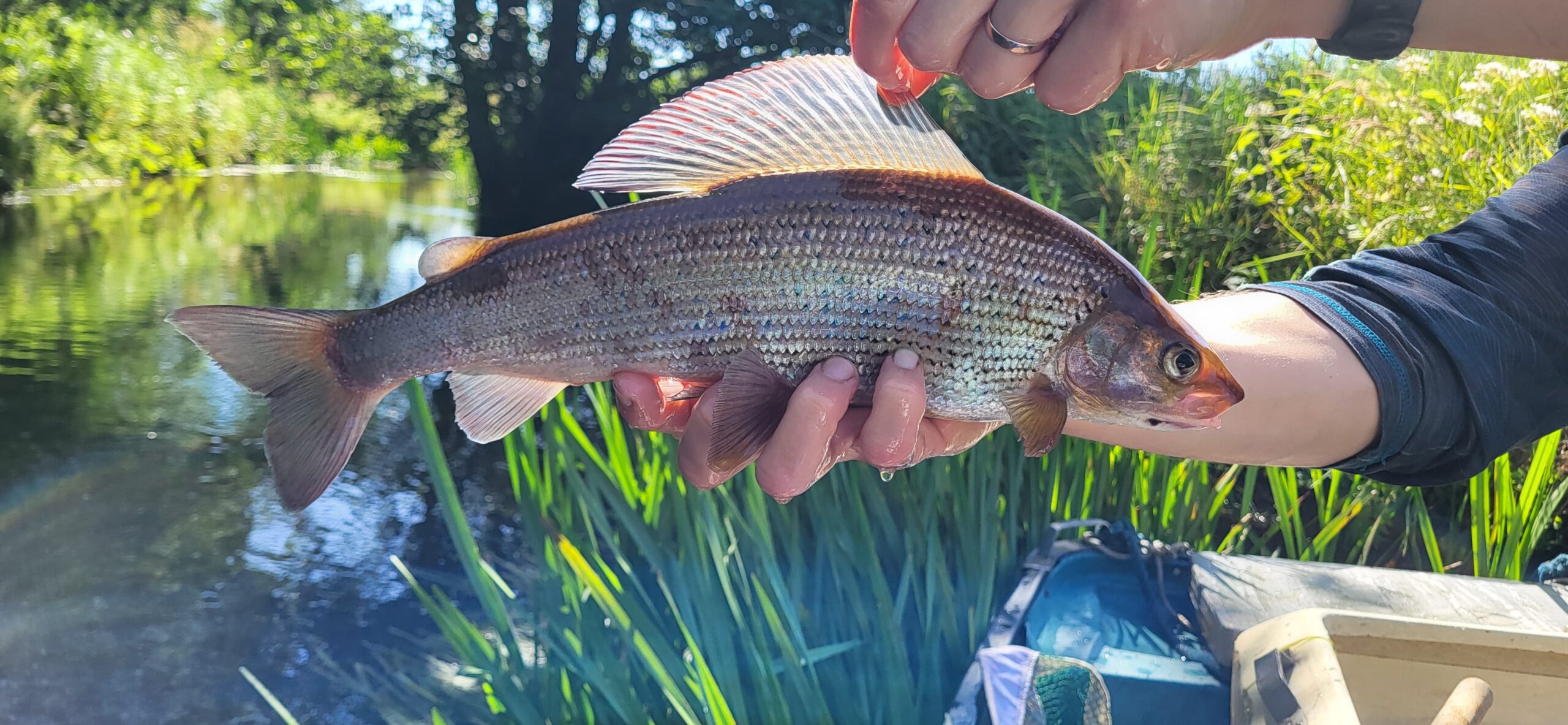What makes a fish more likely to become prey for birds? Is it the size of the fish, the speed of the predator — or something as subtle as the curve of a river?
These are the kinds of questions ProtectFish tries to answer in our Work Package 3: cormorants and habitats – ecosystem effect and protection of river fish – where we investigate how environmental conditions and river morphology influence predation pressure. Understanding these dynamics is essential for protecting freshwater fish populations, as the project tries to do.
Insights from the Gudenå river study in Denmark – July 2025 fieldwork results
As part of ProtectFish efforts under its Work Package 3, our project partner DTU Aqua recently conducted fieldwork activities along the Gudenå River near Tørring, Denmark, to examine how river landscape and morphology affect fish biomass and, potentially, predation by birds.
During this fieldwork, DTU Aqua estimated fish biomass from a channelized stretch in an area with a lot of traffic, and from a stretch without traffic that is less impacted and has more natural bends. This is to evaluate how landscape characteristics may affect predation by birds.
To estimate fish biomass, DTU Aqua has executed electrofishing activities in both selected stretches, allowing our researchers to identify each fish species caught while also weighing and measuring each caught individual.
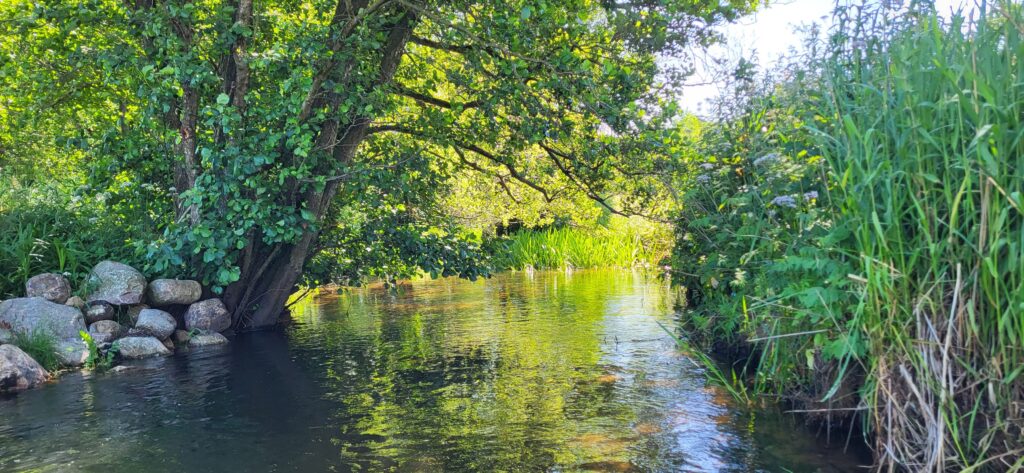
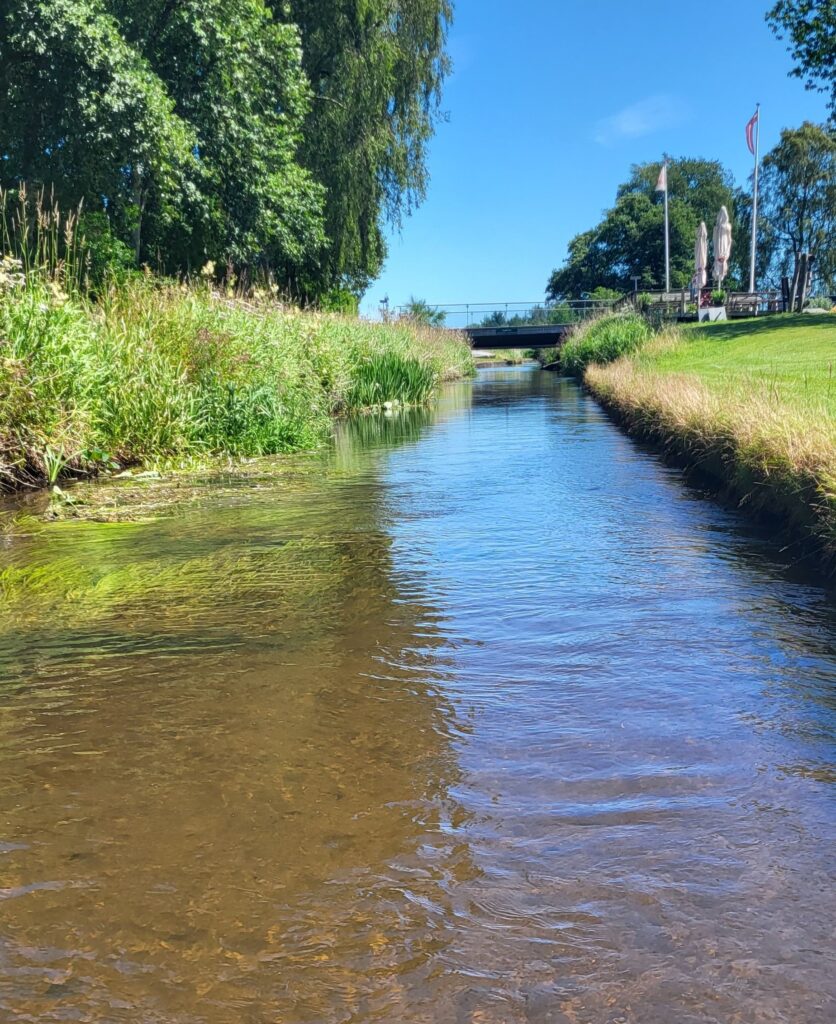
Now, DTU Aqua will be comparing the biomass of both stretches to identify which natural elements provide better shelter for fish species against predation and which don’t.
Although our biomass analysis is still underway, and we are not yet releasing official data, preliminary observations indicate a higher number of fish caught in the trafficked, channelized stretch compared to the more natural site.
ProtectFish’s Work Package 3 will provide an updated evaluation on the conservation status of listed river fish species in Europe. It will work on the definition of what “favourable conservation status” of European river-fish means and test if anti-predation measures can help in reaching the Good Ecological Status in European rivers, as required by the EU Water Framework Directive (WFD).
It is supervised by the Federal Institute of Hydrology (BfG) – Germany.
Testing Passive Integrated Transponder (PIT) tags
In parallel with biomass assessments, our researchers from DTU Aqua tested the capture-mark-recapture method with 14mm PIT-tags (Passive Integrated Transponder tags) on all fish larger than 12cm.
These tags are:
- Placed in fish larger than 12cm
- Equipped with a unique ID code that can be read with a scanner during recapture
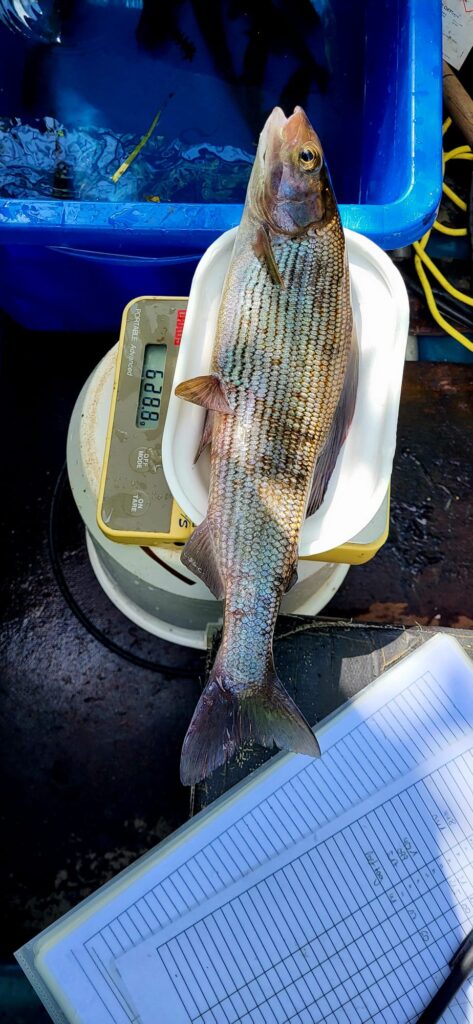
Grayling with bite marks
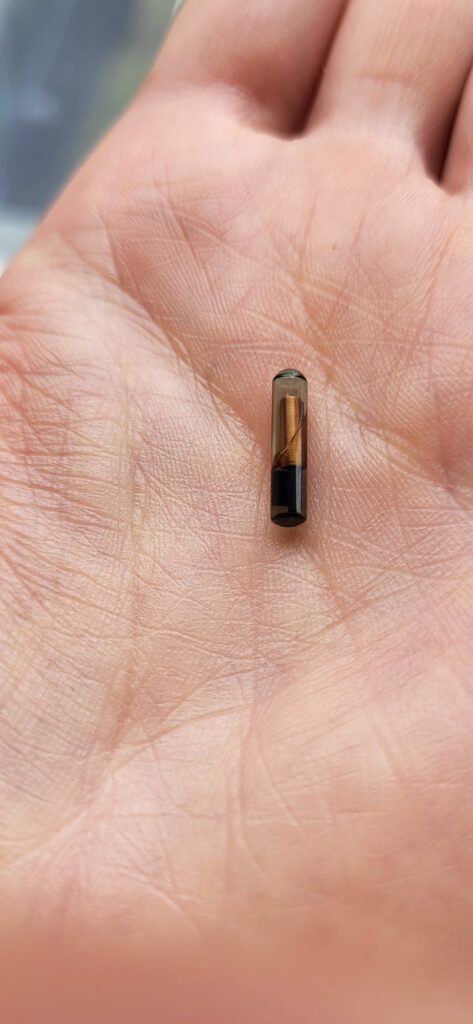
PIT tag
While these tags do not transmit signals on their own, they respond to external electromagnetic scanners, allowing our scientists to track fish movement, survival, and behaviour over time.
This method offers significant potential for long-term ecological monitoring, especially in studying how fish interact with their environments under varying pressures, including predation and human activity.
We look forward to sharing more detailed results once our biomass analysis and PIT tag tracking data are complete.
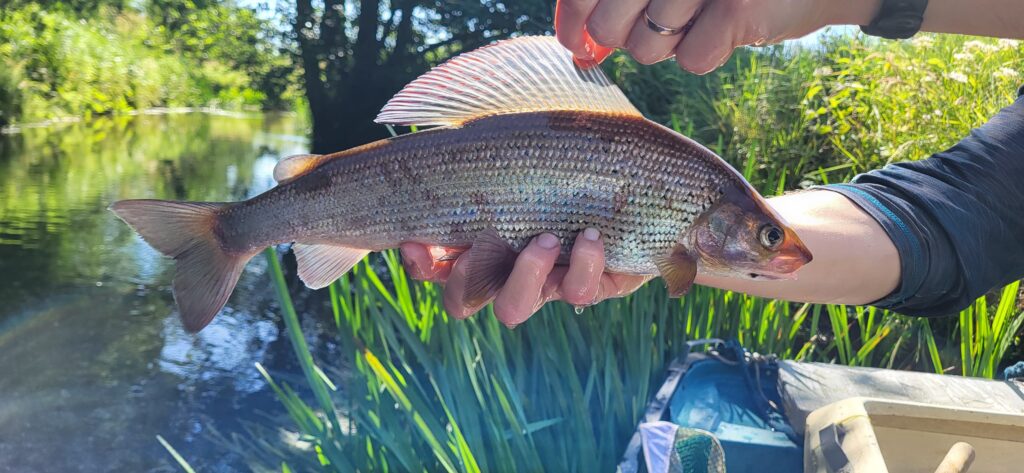
Grayling
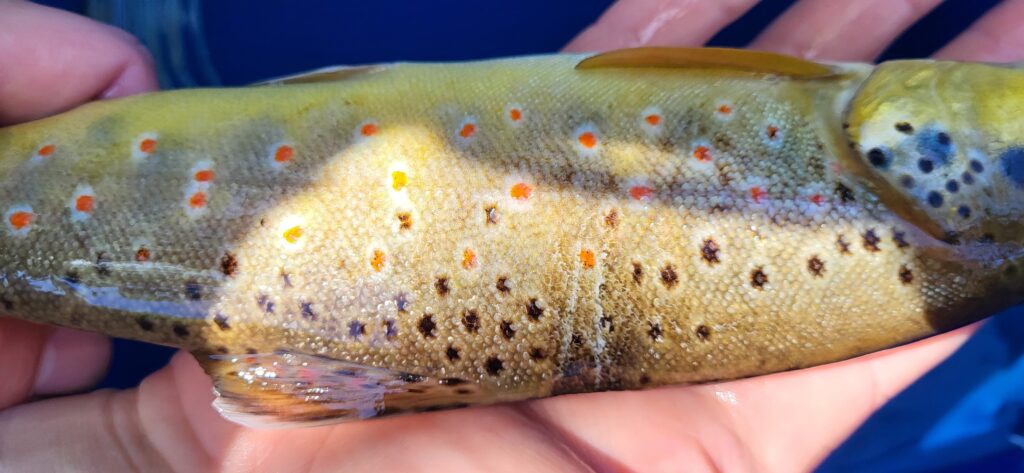
Brown trout with bite marks
